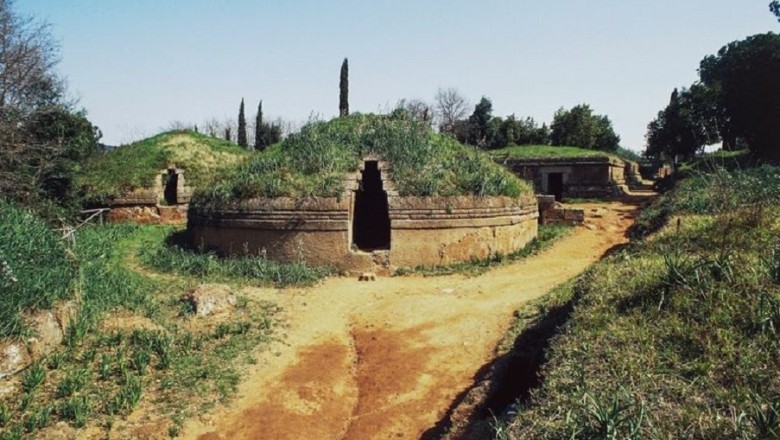
Experts Finally Decipher Ancient Message Wrapped Around Mummy
Liber Linteus
The mummy of Zagreb has always been a source of fascination, especially because of the cryptic text associated with it, known as the Liber Linteus. This mysterious manuscript points to a deep connection with an ancient, now lost civilization, an idea that has captivated researchers and linguists for years. Despite its confusing nature, dedicated research has gradually shed light on its origin and meaning.
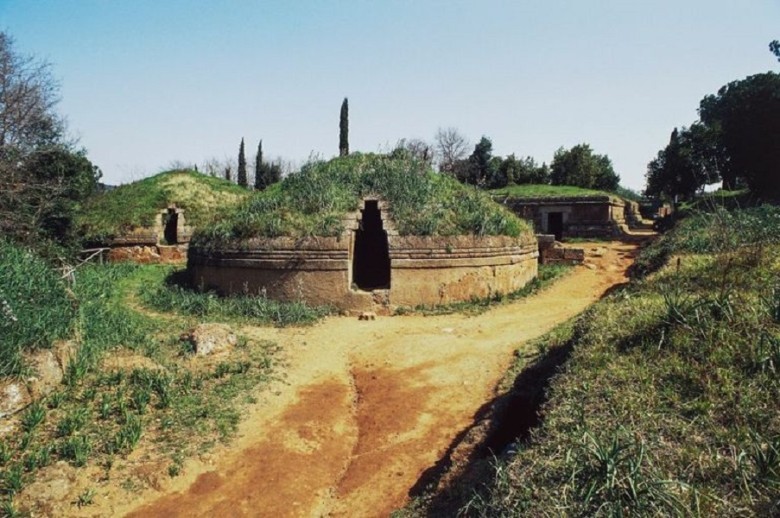
With each new discovery, the solution to the puzzle of the Liber Linteus comes closer, and secrets of a long-lost time are deciphered. Recent advances in linguistics and archaeology have been particularly promising, slowly revealing the layers of this complex mystery.
Egyptomania
The roots of fascination with the Liber Linteus go back to the 19th century, during the era of Egyptomania. This global obsession with everything Egyptian was ignited about 50 years earlier, after the bold invasion of Egypt by French commander Napoleon Bonaparte.
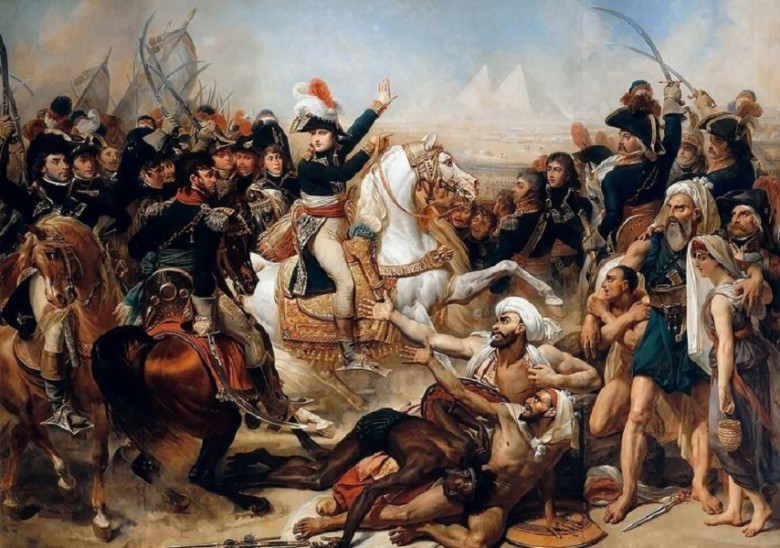
Although the main objective was military conquest, Napoleon's invasion unintentionally introduced the wonders of ancient Egypt to the world at large. This led to a renewed appreciation and curiosity for Egypt's rich history and treasures, which also persisted in the following decades.
The Scholars
An interesting aspect of Napoleon's campaign in Egypt was the inclusion of scholars in his military entourage. These were esteemed scientists and intellectuals whose mission was to promote the ideals of the Enlightenment in newly explored lands.
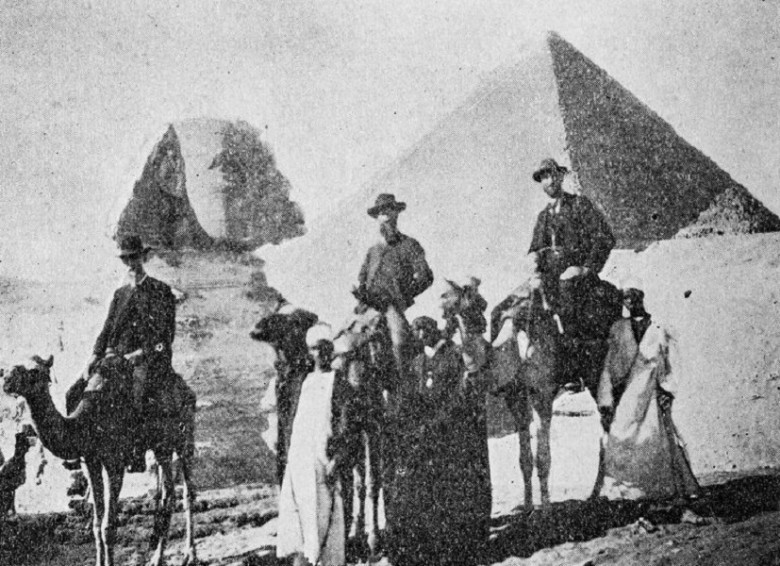
Their detailed documentation and revelations about the region played a crucial role in sparking and sustaining a profound interest in Egyptology among Western scholars and enthusiasts. The secrets and wonders of ancient Egypt soon became a global topic of conversation.
Rosetta Stone
To Egypt's allure, a groundbreaking discovery was added, made by Napoleon's troops shortly after their invasion: the Rosetta Stone. This remarkable stone tablet, engraved with three variants of ancient scripts, became the key to deciphering the long-lost hieroglyphs.

In the following decades, linguists made significant progress in understanding and translating these hieroglyphs with the help of the Rosetta Stone. However, despite these successes, certain scripts and languages remained a mystery.
Mihajlo Baric
One such astonishing find did not come from the sands of Egypt but from the European city of Zagreb, the capital of Croatia. In 1848, a man named Mihajlo Baric, inspired by the prevailing Egyptomania, resigned from his stable job in the Hungarian Royal Chancellery.
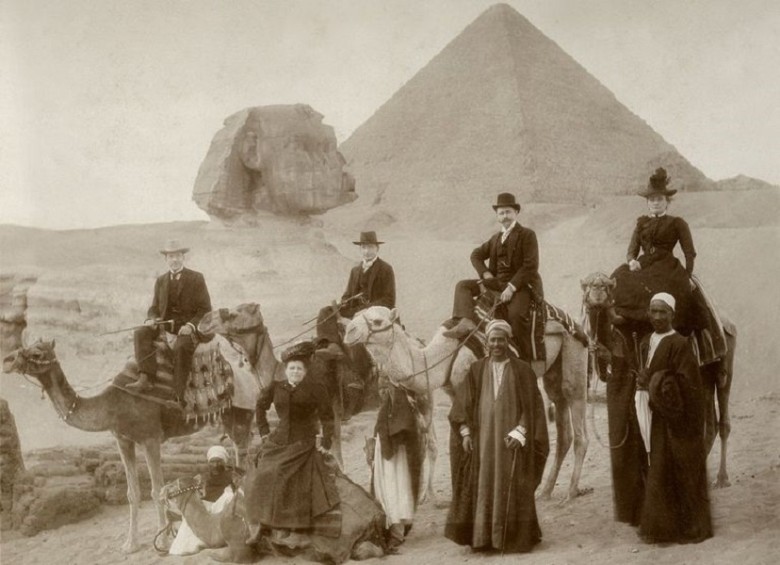
Drawn by the stories and allure of ancient Egypt, he embarked on a journey and immersed himself in its rich history. During his adventures, he came across a fascinating series of linen fabrics with unknown scripts.
Alexandria
Baric's journey took him to Alexandria, a historically significant city on the Mediterranean coast of northern Egypt. The blend of history, culture, and mystery resonated deeply with Baric.

So captivated was he by the beauty of Alexandria and the vast Egyptian landscape that he felt compelled to bring back a tangible piece of this ancient land to Europe as a memory of his extraordinary journey.
Back to Vienna
The souvenirs of the 19th century, however, were vastly different from what modern travelers would consider. Baric couldn't find conventional mementos like refrigerator magnets or scale models of Egyptian landmarks.
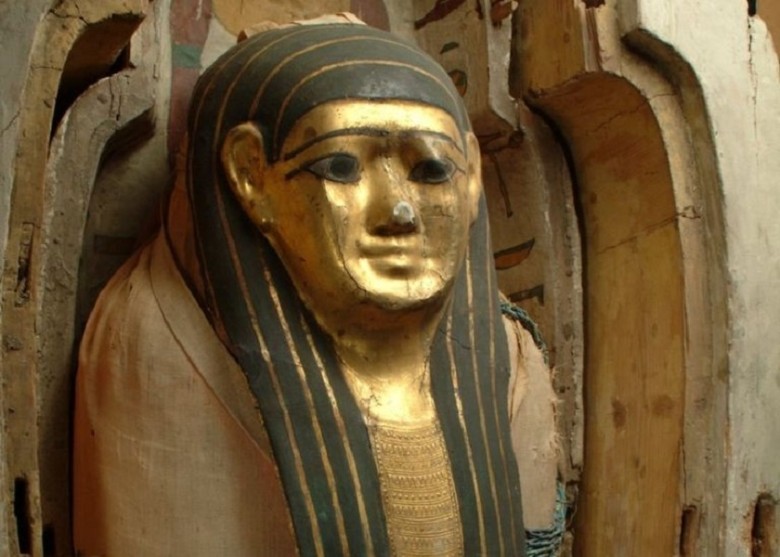
But his choice of souvenir was an authentic ancient sarcophagus, complete with its contents. He transported this monumental artifact to Vienna, Austria, as a testament to his incredible journey.
An unusual souvenir
Upon arriving in Vienna, the sarcophagus was prominently displayed in Baric's elegantly furnished living room. Baric decided to remove the linen bindings from the mummy, an arrangement that became more than just a decorative piece over time.
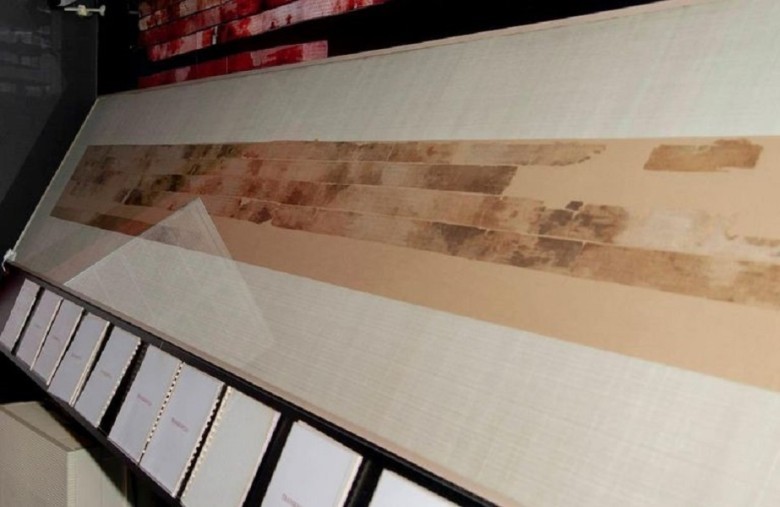
For Baric's visitors, the ensemble became a fascinating topic of conversation. The ancient artifacts elicited a variety of reactions, a mix of wonder and unease among those who viewed them.
A new home
Baric's death in 1858 led to a change in the custody of the mummy. The eerie inheritance was passed on to his brother, Ilija, a priest in the Croatian region of Slavonia.

Unlike his brother, Ilija neither had the enthusiasm nor the space for such an artifact. So pragmatically, he bequeathed the mummy and its linen bindings to the Archaeological Museum in Zagreb in 1867.
Heinrich Brugsch
When the linen bindings were accessioned into the museum's collection, it wasn't their old age but rather the mysterious symbols on them that caught attention. The museum staff quickly realized that these linens could hold the key to an unknown chapter of history.

They recognized the significance and potential importance of the discovery and sought expertise outside of their own institution. They promptly contacted Heinrich Brugsch, a beacon in the field of Egyptology from Germany.
Hieroglyphs
Heinrich Brugsch, with his deep understanding of ancient scripts, delved intensely into the inscriptions on the linen. Initially, Brugsch believed that the symbols on the fabric resembled Egyptian hieroglyphs deciphered through the Rosetta Stone.

But as often happens, time can reveal that first impressions can be deceiving. A decade later, an enlightening conversation with a colleague would dramatically change his perspective and reveal that he had actually misjudged the true nature and origin of the inscriptions.
Richard Burton
In the autumn of 1877, Heinrich Brugsch found himself engaged in a captivating dialogue with British explorer Richard Burton. The mysterious markings on the linen bindings of the Zagreb mummy were once again under scrutiny.

In a moment of shared enlightenment, the two scholars formulated an alternative theory. They speculated that these writings could potentially be an Arabic interpretation of the famous Egyptian funerary text, the Book of the Dead.
Jacob Krall
On the convoluted path to unraveling the secrets of the linen, the initial hypothesis proposed by Brugsch and Burton was soon put to the test. This time, it was Jacob Krall who took the lead in the investigation.
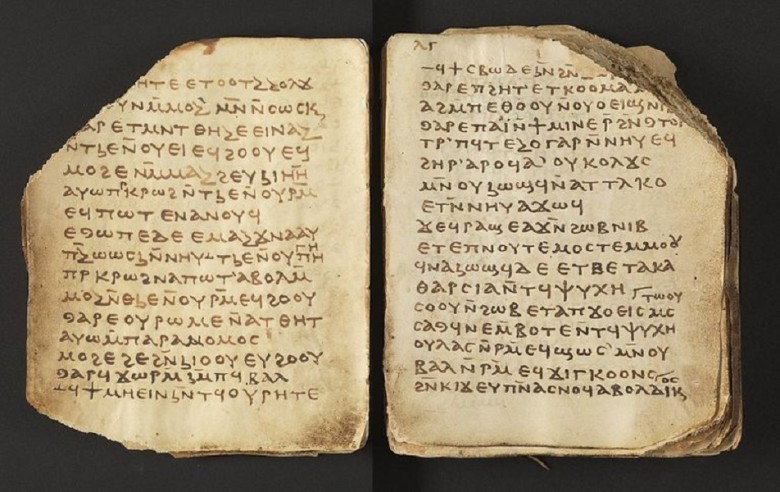
As he meticulously studied the inscriptions, Krall's intensive analysis revealed new insights. His findings would soon shed new light on the inscriptions and lead to completely different conclusions.
Etruscan
When Jacob Krall began his examination of the enigmatic inscriptions, his knowledge proved invaluable. Krall identified them as Etruscan, a relic of an extinct civilization that once reigned in regions of present-day Italy.

This revelation, though groundbreaking, was only the tip of the iceberg. The intricacies of Etruscan script posed significant challenges, making complete decipherment a daunting task.
A lost civilization
The Etruscan civilization, though largely forgotten today, was a significant power thousands of years ago. The Etruscans connected the worlds of prosperous Greeks and Celts through trade.
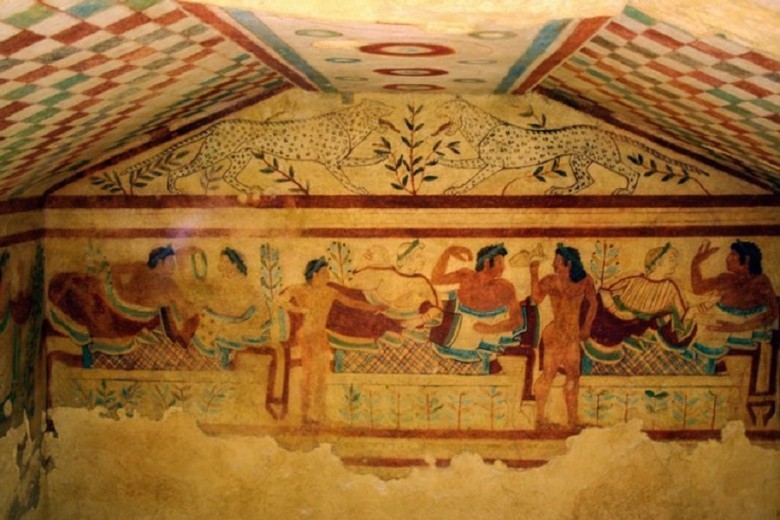
Their influence and prominence in the ancient world made their connection to the linen fabrics of the Zagreb mummy all the more puzzling.
The Roman Empire
During the upheavals of the 4th century BC, the once flourishing Etruscan territory fell under the control of Roman soldiers. As the Roman Empire expanded its territories, the heritage of the conquered Etruscans merged with that of their conquerors. However, instead of disappearing entirely, the core of Etruscan customs, including their unique language and religious rituals, was adopted and further evolved within the new culture.
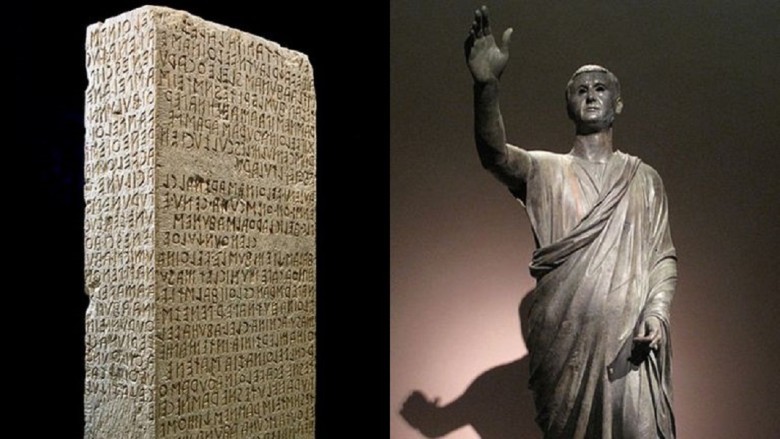
This blending of traditions stood as a testament to the resilience of cultural practices, even in the face of empires. The Roman adoption of Etruscan practices was a remarkable act of preservation. However, over time, the original Etruscan essence became increasingly obscured.
The Etruscan legacy
As time went on, the dominance of the Latin language, heavily influenced by Etruscan roots, grew exponentially. This linguistic development began to overshadow Etruscan and push it into the realms of oblivion. Modern linguists regard the ancient Etruscan language as a fascinating puzzle, with surviving texts being rare.
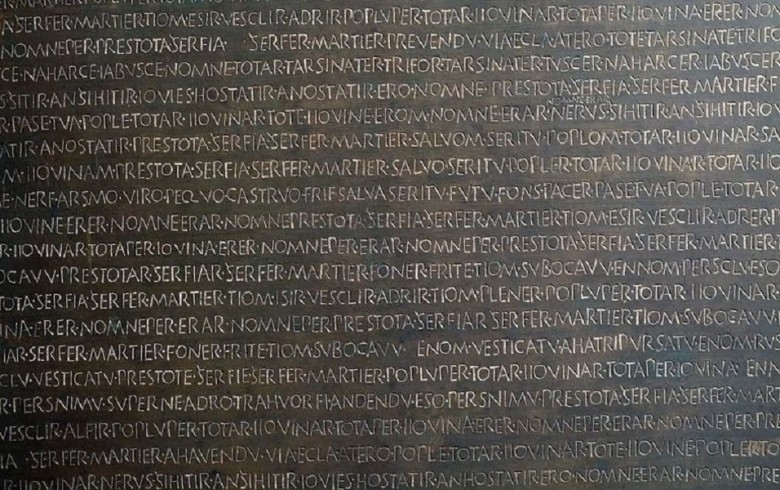
Amidst the scarcity of surviving Etruscan texts, the Liber Linteus stands out as an invaluable relic. Today, despite its undeniable historical significance, only fragments of the language can be deciphered.
Impossible to Translate
The uniqueness and rarity of the Etruscan language made it an extremely challenging puzzle for linguists throughout history. Many have attempted and failed to decipher its secrets. During Jacob Krall's time, his groundbreaking discovery of the Etruscan language on the linen of the Zagreb mummy shocked the academic world.

The enigmatic nature of this language, especially during Krall's time, made its identification akin to searching for a needle in a haystack. The linguistic mystery of the Etruscan language was a puzzle during a less resourceful era.
Deciphering the Liber Linteus
Jacob Krall embarked on a meticulous restoration journey, despite dealing with a scarcely known language. His expertise guided him in rearranging the scattered segments of the text to reveal its intended sequence. Through his eyes, the seemingly loose strips converged into a twelve-page document, written from right to left.

But the challenges didn't end there; the initial sections of the manuscript were heavily damaged. Determining the starting point of this ancient book became a considerable task, deepening the mystery surrounding it.
Religious Calendar
In the following years, various linguists attempted to translate parts of the 1,200-word content of the Liber Linteus. Insights into the ancient Etruscan world began to emerge from these translations, revealing timelines, deities, and possible rituals.
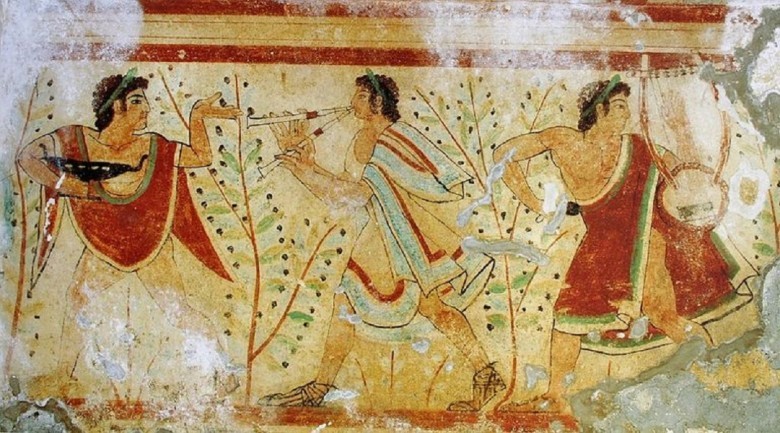
The uncovered snippets led many to speculate that the text may have served as a religious calendar. Some believe that this calendar played an essential role in the precise timing of religious rites.
The Burning Question
However, a fundamental question remained. How did an Etruscan text come to enshroud a mummy in the heart of Egypt, a land thousands of miles away? The early 20th century saw a wave of curious scholars passionately examining the Liber Linteus in the hopes of shedding light on this historical mystery.

The journey of this unique relic from its Etruscan origins to its resting place in Egypt continues to fascinate and perplex historians and researchers.
Infrared Photography
Technological advancements, such as infrared photography, allowed researchers to delve deeper into the secrets of the Liber Linteus text. Through closer examination of the text, various hypotheses began to emerge.
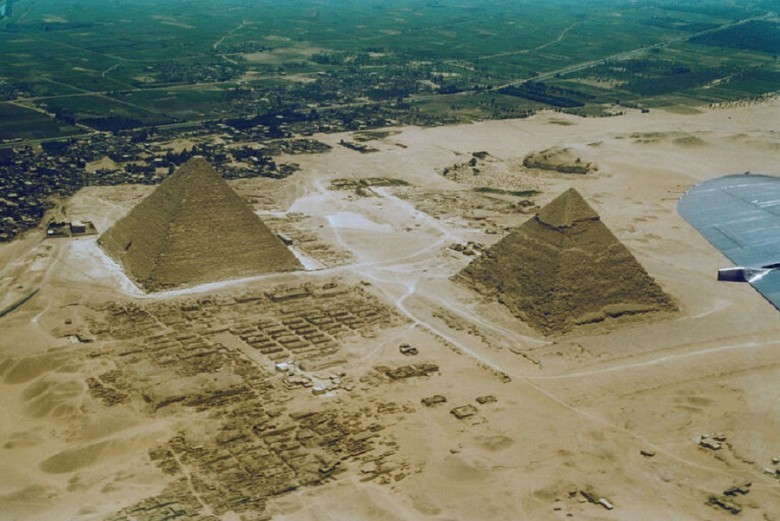
Early theories speculated that the mummified remains may belong to an Etruscan who later migrated to Egypt. Such a narrative could explain the fusion of mummification, an Egyptian custom, with the wrapping of the Etruscan text.
Ancient Customs
At first glance, the Etruscan-Egyptian fusion theory seems plausible, considering the Etruscan tradition of cremation compared to the Egyptian practice of mummification. However, the discovery of a papyrus scroll within the coffin, bearing the Egyptian Book of the Dead, led to a shift in this narrative.
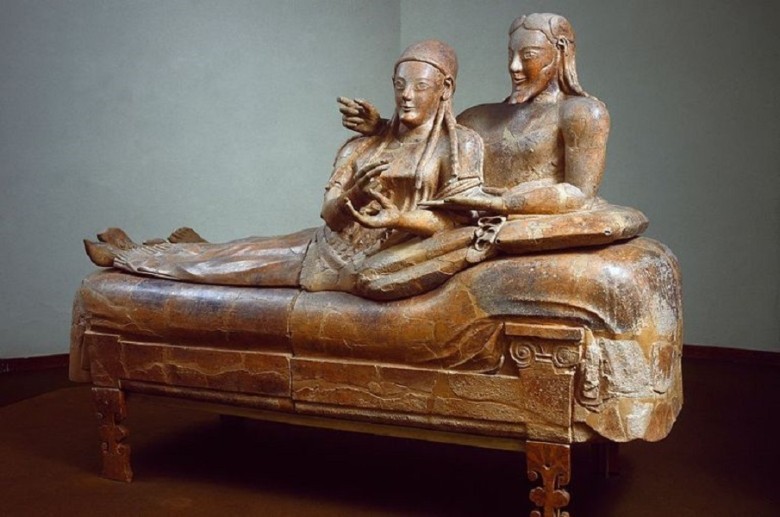
Despite its deteriorated state, the papyrus revealed the identity of the deceased—a woman named Nesi-hensu, previously married to a tailor. This discovery led to a reassessment of previous theories.
Nesi-hensu
The tangible link between the mummy and Egyptian culture was established through the inscription that accurately described Nesi-hensu and her husband, Paher-hensu, both from Thebes in Egypt. Such revelations made scholars doubt the Etruscan connection of the deceased, making the merge of the Liber Linteus with the mummy even more perplexing.

How did the worlds of an Egyptian woman and a distant Etruscan text come together in such an intimate way? There were many theories, but concrete answers remained elusive.
No Connection
Historical records indicate that the Liber Linteus dates back to around 250 BC, with origins in present-day Tuscany. In contrast, Thebes is located in modern-day Luxor, creating a significant geographical gap.
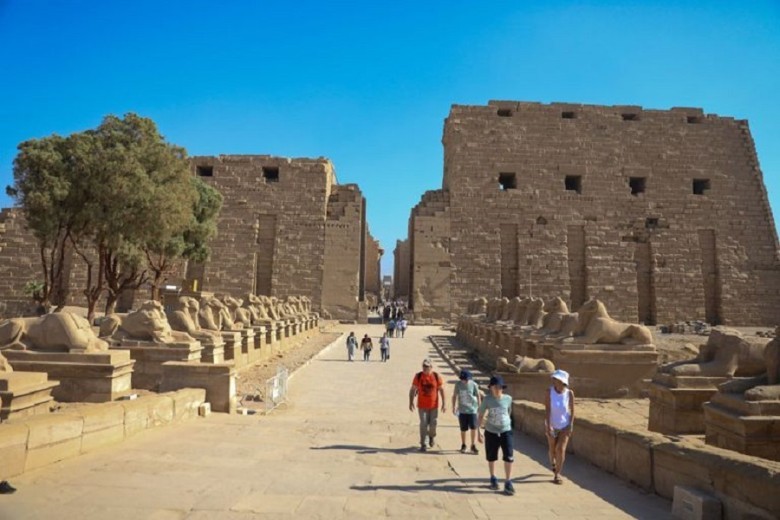
Bridging the immense distance between these two ancient civilizations becomes a monumental task, especially considering travel possibilities in antiquity. The intertwined stories of the Liber Linteus and the remains of Nesi-hensu are a testament to the unpredictability and interconnectedness of ancient civilizations.
A Long Journey
The timeframe of mummification practices in Egypt, extending until the fourth century AD, offers a possible window into the mystery. It is conceivable that the Liber Linteus made its way to Egypt several centuries after its creation, just in time to become part of Nesi-hensu's burial.

The significant temporal gap between the creation of the Etruscan text and the mummification of Nesi-hensu further complicates the puzzle of this complex historical mystery.
Enough Time
Some researchers have suggested that the Liber Linteus may have been the only available linen during Nesi-hensu's embalming process. If this theory holds true, the world's most significant Etruscan script may have been preserved purely by chance.

Such an explanation presents the union of the mummy and the text as a fortunate event with no deeper cultural or symbolic meaning. Theories like these emphasize the role of chance in preserving history.
More than Just Chance
The mysterious nature of the Zagreb mummy, coupled with the intricate details of the Liber Linteus text, has astonished and challenged scholars for countless generations. Even with the advancements in modern technology and its application in historical research, fully deciphering the text has proven to be arduous. Yet, with each passing year, the relentless pursuit of knowledge and understanding drives researchers to pursue innovative new approaches.

These contemporary insights and refined methods are gradually unraveling this long-standing enigma. Piece by piece, the once impenetrable veil around the Liber Linteus is lifting, granting glimpses into its deeply rooted secrets.
An Ongoing Mystery
Recent developments in the study of the Etruscan language, such as the 2008 publication by historical linguist Glen Gordon, have rekindled hope. By compiling over 1,000 Etruscan words and their English equivalents, Gordon created one of the most comprehensive Etruscan dictionaries.

This monumental effort has since served as a fundamental resource for enthusiasts and experts alike, paving the way for new interpretations of the ancient script.
Glen Gordon
The age of the internet, characterized by information exchange and collaborative efforts, has proven to be a blessing for the study of ancient languages such as Etruscan.
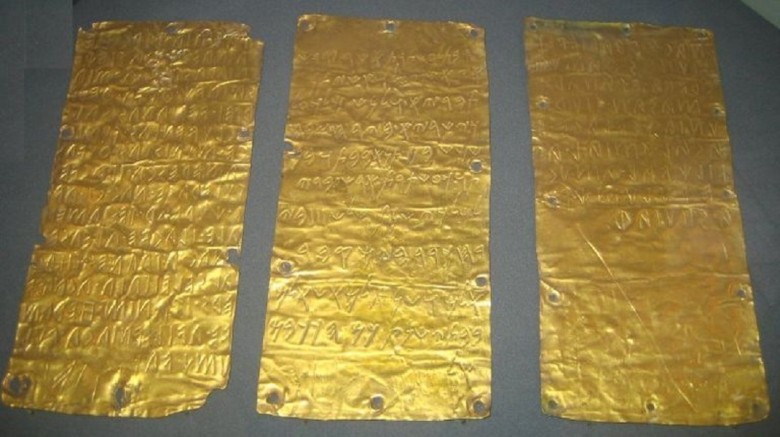
With online resources available, like Gordon's dictionary, passionate amateurs worldwide have begun their translation attempts. The collective efforts of the global community hold the potential to uncover the long-held secrets of the Liber Linteus and connect the past with the present.
Translation
In the dynamic digital age of 2010, a diligent Wikipedia user utilized Gordon's comprehensive dictionary as a tool to decipher the complex phrases in the Liber Linteus. The individual was able to provide a translation for the text "sacnicstres cil?s spurestresc enas," which was interpreted as "so that this soul may dwell/stay in the city of the night and among the people."

However, this translation was not without its critiques and shortcomings. The creator of the dictionary, Gordon, upon closer examination, identified several issues with this interpretation, pointing to the inherent challenges of deciphering an ancient language and understanding the nuances embedded within.
Corrections
Gordon, the learned historical linguist who provided the foundational resources for the Etruscan language, was quick to highlight the inconsistencies in the previous translation. He partially attributed the misinterpretation to his own shortcomings in clearly presenting his methods.
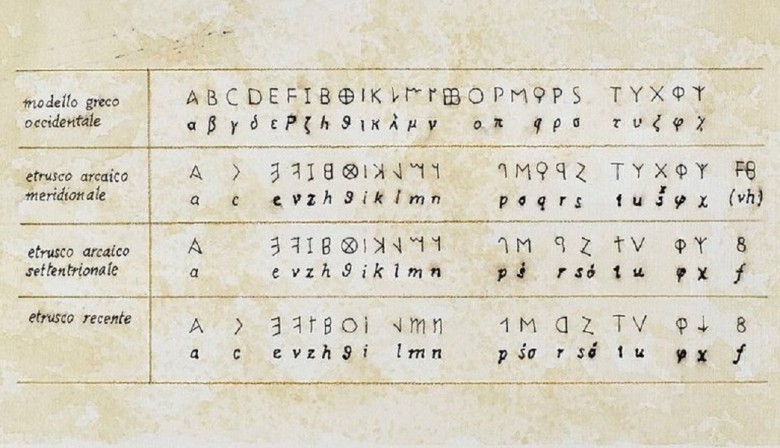
In a carefully crafted blog post in January 2011, Gordon presented a variety of alternative translations. One of his suggestions hinted at a completely different meaning: "For the spirit of the night, for (the) city, and for (its) eternal people."
The Spirit of the Night
Delving deeper into the enigmatic realm of the Etruscan language, Gordon's blog post elucidated another plausible translation: "To the spirit of the night (and) to the eternal city." But his linguistic explorations did not end here. From his studies emerged a fascinating question.
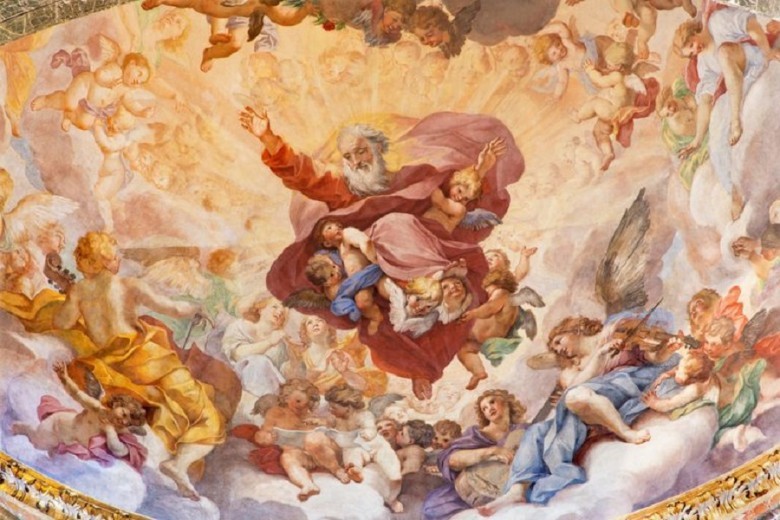
In the given context, is the mentioned "spirit of the night" singular or plural? This distinction was of utmost importance as it pitted the idea of a collective entity of wandering souls against the symbolism of a singular, recently deceased soul.
Stars of the Show
The Liber Linteus, with its cryptic inscriptions and historical significance, stands as a monumental challenge that linguists and historians expect to remain unsolved for many foreseeable years.

The linen strips adorned with these mysterious inscriptions and the mummy that once enveloped them have surprisingly become the stars of the show at the renowned Archaeological Museum in Zagreb. Visitors from around the world are fascinated by the spectacle and captivated by the puzzle of this relic from a bygone era.
The Vucedol Dove
Each year, the Archaeological Museum in Zagreb experiences an influx of tens of thousands of history enthusiasts and curious minds. They come to view a range of exhibits, including the illustrious Vucedol Dove.

This artifact, a ceramic vessel, is a testament to the Vucedol culture, believed to have its origins between 2800 and 2500 BC. The significance and importance of the Vucedol Dove are so profound that it has influenced the designs of banknotes in the homeland, further solidifying its cultural significance.
The Lumbarda Psephisma
Beyond the well-known Liber Linteus, the museum hosts other significant artifacts, including the Lumbarda Psephisma. This stone tablet tells the story of an ancient Greek community that once flourished on an island near the Croatian coast.

However, even among these historically rich artifacts, the Liber Linteus holds its own pedestal, carefully preserved in a special cooling chamber, emphasizing its unparalleled value and historical significance.
Zagreb Earthquake
The passage of time has been kind to the Liber Linteus. Despite numerous analytical efforts and the hands of time, this ancient relic has managed to maintain an impeccable condition, a testament to its longevity and the care it has received.
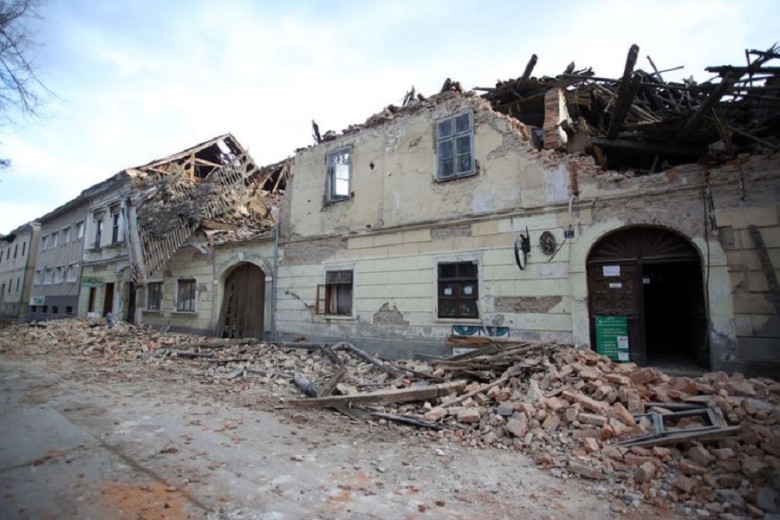
However, history took a tumultuous turn in March 2020 when Zagreb was struck by a 5.3 magnitude earthquake, the strongest in over a century. The devastating tremors caused significant structural damage to the esteemed Archaeological Museum of the city.
The Vucedol Dove
Every year, the Archaeological Museum in Zagreb experiences an influx of tens of thousands of history enthusiasts and curious minds. They come to view a range of exhibits, including the illustrious Vucedol Dove.

This artifact, a ceramic vessel, is a testament to the Vucedol culture, believed to have its origins between 2800 and 2500 BC. The significance and importance of the Vucedol Dove are so profound that it has influenced the designs of banknotes in the homeland, further solidifying its cultural significance.
The Lumbarda Psephisma
Beyond the well-known Liber Linteus, the museum hosts other significant artifacts, including the Lumbarda Psephisma. This stone tablet tells the story of an ancient Greek community that once flourished on an island near the Croatian coast.

However, even among these historically rich artifacts, the Liber Linteus holds its own pedestal, carefully preserved in a special cooling chamber, emphasizing its unparalleled value and historical significance.
Zagreb Earthquake
The passage of time has been kind to the Liber Linteus. Despite numerous analytical efforts and the hands of time, this ancient relic has managed to maintain an impeccable condition, a testament to its longevity and the care it has received.

However, history took a tumultuous turn in March 2020 when Zagreb was struck by a 5.3 magnitude earthquake, the strongest in over a century. The devastating tremors caused significant structural damage to the esteemed Archaeological Museum of the city.
A Near Catastrophe
In the aftermath of the seismic catastrophe, there was a collective sigh of relief among historians and the global community when they discovered that the Liber Linteus had remained unharmed.

Wonderfully, several other significant exhibits also survived the seismic assault. However, not all artifacts were fortunate; many priceless relics from ancient Egyptian and Greek civilizations were irretrievably lost. This event underscored the fragility of history and served as a poignant reminder of the potential loss of the secrets of the Liber Linteus before they could be fully revealed.

















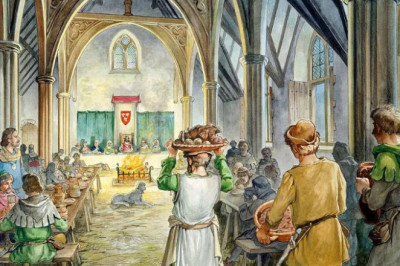


Comments
0 comment